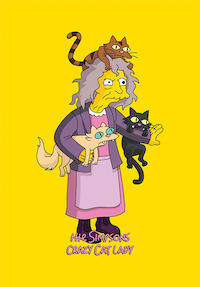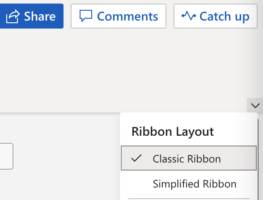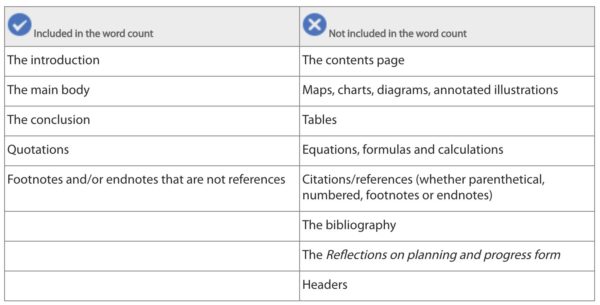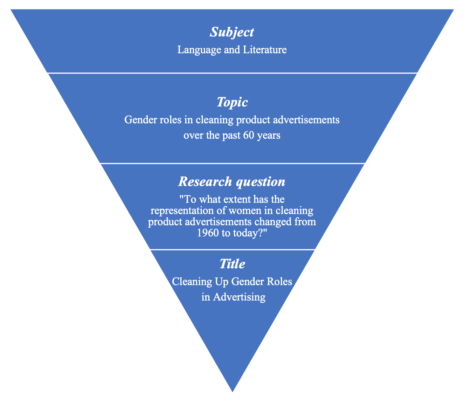
MLA9 Style
- A system for documenting your information sources
- Created by the Modern Languages Association (9th edition)
- Recommends a set of guidelines to follow when citing sources in a research paper
- Recommends a set of guidelines for formatting a research paper
- The most commonly used citation style
- No. The IBO states that you may choose any style you like, as long as you are consistent.
- However, St. George’s International School recommends MLA9 style due to its flexibility, popularity, and recently updated edition.
How to cite common sources in MLA9 style
In-text citation examples
PARAPHRASE:
- Celebrities often use their fame to launch a business, to influence politics, or to raise funds (Davis 123).
- Paraphrased sentence (author’s last name + page).
QUOTE:
- “Celebrity brings symbolic capital, which is transferable to economic, political, and other capital forms” (Davis 123).
- “Quotations marks” (author’s last name + page).
Works Cited list examples
BOOK:
- Davis, Aeron. Promotional Cultures. Cambridge, Polity Press, 2013.
- Author. Title of Book. City of publication, Publisher, publication year.
CHAPTER IN A BOOK:
- Davis, Aeron. “Celebrity Culture and Symbolic Power.” Promotional Cultures, Polity Press, 2013, pp. 112-131.
- Author. “Title of Chapter.” Title of Book, Publisher, publication year, page range.
In-text citation examples
PARAPHRASE:
- Humorous campaign speeches help political candidates to bond with their supporters (Stewart 55).
- Paraphrased sentence (author’s last name + page).
QUOTE:
- “The use of humor by presidential candidates has long been lauded as an effective tool to simultaneously mobilize supporters and alienate the public from competitors” (Stewart 55).
- “Quotations marks” (author’s last name + page).
Works Cited list examples
- Stewart, Patrick A. “Presidential Laugh Lines: Candidate display behavior and audience laughter in the 2008 primary debates.” Politics and the Life Sciences, vol. 29, no. 2, 2010, pp. 55–72, www.jstor.org/stable/41417931.
- Author(s). “Title of Article.” Title of Journal, volume, issue, publication year, page range, url or doi.
In-text citation examples
PARAPHRASE:
- Nemo Rupa, an Indonesian garbage scavenger, earns only $234 per month (“Dollar Street”).
- Paraphrased sentence (author’s last name OR “Title of Page/Article”).
QUOTE:
- “Nemo is 49 years old and works as a garbage scavenger” (“Dollar Street”).
- “Quotation marks” (author’s last name OR “Title of Page/Article”).
Works Cited list examples
- “Dollar Street.” Gapminder, www.gapminder.org/dollar-street/matrix?activeHouse=6. Accessed 29 Apr. 2019.
- Author. “Title of page or article.” Website, publication date, url. Date of access.
- (***If no author is listed, skip it. If no publication date is listed, skip it.)
In-text citation examples
PARAPHRASE:
- Cats are complex creatures (Talltanic 0:56).
- Paraphrased sentence (author + time in video).
QUOTE:
- “People are multi-faceted and cats are too” (Talltanic 0:56).
- “Quotation marks” (author + time in video).
Works Cited list examples
- Talltanic. “Ways to Show Your Cats Love that They Can Understand.” YouTube, 1 Feb. 2019, https://www.youtube.com/watch?v=ob4q0ODu7Jc. Accessed 29 Apr. 2019.
- Author or Creator. “Title of Video.” YouTube, uploader if different from author, date of upload, url. Date of access.
In-text citation examples
TABLE: An arrangement of data in rows and columns is called a table.
- Pet owner statistics revealed a pattern (see table 2).
- Sentence referring to table (see table + number of table).
- Table 2. Pet Statistics
- Table + corresponding number. Title of Table


- Source: Lady, Caterina; AllCat; January 2019, www.allcat.com. Accessed 3 Feb. 2019.
Source: Author or Creator; Website; publication date, url. Date of access.
FIGURE: Any visual that is not a table is called a figure (ex: image, photo, map, diagram, chart, etc.).
- Popular culture often uses stereotypes to portray lonely old women (see fig. 1).
- Sentence referring to figure (see fig. + number of figure).

- Fig. 1. Crazy Cat Lady; Sky TV; The Guardian; 16 Apr. 2018, www.theguardian.com/crazy-cat-lady. Accessed 29 Apr. 2019.
- Fig. 1. Caption and/or “Title”; Author or Creator; Website; publication date, url. Date of access.
Works Cited list
- Sources for visuals appear within your essay, and do not need to appear in the Works Cited list.
How to format a paper in MLA9 style
- If you are using the online version of Word, select Ribbon Layout > Classic Ribbon

- Select All (⌘ A)
- Ribbon> Home> Choose font style (Times New Roman) and font size (12)
- Begin with single-spaced text and no blank lines between paragraphs
- Select All (⌘ A)
- Ribbon> Home> Line and paragraph spacing> > Indents and Spacing > Spacing > Line Spacing > 2.0 (or Double)
- Select All (⌘ A)
- Ribbon > Home > Align left
- Create a blank page for the Table of Contents
- Place cursor before the first character on the first page
- Ribbon > Insert> Pages > Page Break
- Create a separate page for the Bibliography
- Place cursor before “Bibliography” and Insert a Page Break
- Place the cursor at the top of the blank page you created for the Table of Contents
- Ribbon>Insert>Pages>Cover Page>Facet
- Document title: Type the title of your essay
- Document subtitle: Type the subject of your essay
- Abstract: Replace “Abstract” with “Research Question”
- Replace the text under “Abstract” with your research question
- Instead of your name, put “Word Count: XXXX”
For each figure:
- Highlight the figure and the caption> Ribbon> Home > Align center
- Highlight the figure and the caption> Ribbon> Home> Line and spacing> 1.0 (or Single)
- Insert a line between the caption and the next line of text
For each heading (Introduction, Analysis, Conclusion, Bibliography, etc.):
- Highlight text of heading
- Ribbon> Home > Styles> Select “Heading 1” for main headings, “Heading 2” for subheadings, etc.
- Ribbon> Insert > Page numbers> (make selections)> OK
After you have formatted all headings, inserted page breaks and page numbers:
- Place the cursor at the top left of your “Table of Contents Page” (At the moment, the page is blank and the cursor is near the center)
- Ribbon> References> Table of Contents> Select “Classic”
- To update, click on “Table of Contents”> Update table
- To change font, highlight the text > Ribbon> Home> Choose font style
- Highlight your entire list of resources
- Ribbon> Home> Line and paragraph spacing> Line spacing options> Indentation> Special> Hanging
- Save your work! (⌘ S)
Footnotes and endnotes
- Footnotes use superscripted numbers1 to refer the reader to information contained elsewhere in the paper.
- Footnotes appear at the bottom of the page.
- There are two main types of Footnotes:
- Citations cite the source of the information referred to in the paper.
1 Dav Pilkey, The Adventures of Captain Underpants (New York, NY: Scholastic, 1997), p, 61.
- Explanatory Notes provide supplemental information to the reader.
1 See Pilkey, especially Chapters 4 and 5, for an insightful analysis of Mr. Krupp’s transition.
- The MLA citation style does not use footnotes for citations. Instead, parenthetical references and a “Works Cited” list are used.
- The MLA citation style does not recommend the use of explanatory notes.
- For examples of citations in MLA style, see MLA.
- Endnotes use superscripted numbers1 to refer the reader to information contained elsewhere in the paper.
- Endnotes appear at the end of the paper.
- There are two main types of Endnotes:
- Citations cite the source of the information referred to in the paper.
1 Dav Pilkey, The Adventures of Captain Underpants (New York, NY: Scholastic, 1997), p, 61.
- Explanatory Notes provide supplemental information to the reader.
1 See Pilkey, especially Chapters 4 and 5, for an insightful analysis of Mr. Krupp’s transition.
- The MLA citation style does not use endnotes for citations. Instead, parenthetical references and a “Works Cited” list are used.
- The MLA citation style does not recommend the use of explanatory notes.
- For examples of citations in MLA style, see MLA.
Word count (for IB Extended Essay)
The upper limit is 4,000 words. Examiners are instructed not to read or assess any material in excess of the word limit. See the table below to see what is included in the word count:

Source: IBO.org
Title (for IB Extended Essay)
Your extended essay should have a research question AND a title. Ex:

NoodleTools
Automatic citation and research tool. Login with school email & school password via NoodleTools>Microsoft 365 or this link:
MLA9 Pamphlet
For a printable version of MLA9 reference examples, download the MLA9 pamphlet here.
Practice Document
Download this sample paper (unformatted) to practice formatting a paper in MLA9 style using the instructions on this page (“How to format a paper in MLA9 style”).
Example paper in MLA9 style
Download an example of a paper formatted in MLA9 style.
More help with MLA9
Online Writing Lab (OWL): Purdue University’s guide to MLA referencing. Includes examples of different types of sources.
MLA Citation Style: MLA’s online guide to formatting and citations.

Get Social